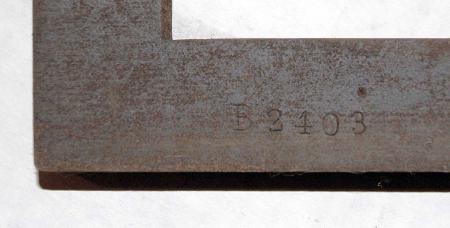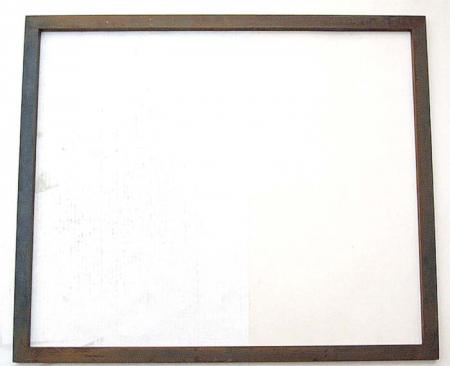Chase Indentification
Greetings,
I have letterpress chase I would like to identify. It measures approximately 23 & 3/8” by 27 & 5/8” OD and 21 & 3/8” by 25 & 5/8” ID. It is 5/8” thick and the width is 1”. The only identifying mark on it is B2403 stamped near one corner. It is made of steel and appears to have no seams at the corners as though it was die cut. I have attached some photographs. Can anyone help?
Thank you.

03.jpg

01.jpg

02.jpg
Could be a stereotyping or electrotyping chase, or could be a chase for a flat bed cylinder press (though the proportions are a bit strange for either a cylinder or a hand press). Since it has no provision for locking on the bed of a platen press I doubt it could be used in one and I’ve never heard of a 21x25 platen jobber.
Bob
There are platen diecutters even larger, but I think they would use bevels or notches to hold the chase. The 5/8” thickness wouldn’t be typical for duplicate platemaking.
This looks like an ordinary chase for a flatbed cylinder press. Chases did not need to be fitted to exact bed dimensions, often smaller chases were used as the job demanded, or multiple chases used together. This square-sided design allowed more flexibilty in lockup than when a bevelled hold-down is needed.
A.L.P. could be correct with the stereotyping chase, whilst running the Monotype I was sent on a course for one week to Hawthorn Baker (A.K.A. as Cornerstone) to be shown how to use a moulding press, and the chase(s) looked very like the one pictured here, they had no obvious lugs, or cut outs, whatsoever for locking in, to any recognised machine. They were completely parallel inside and out, as they only had to accomodate the form of type, with type high bearers, as close as possible to the type on every side, and locked up, not with a lot of pressure, as if going on to a normal machine, only on to the bed (bottom platen) of the moulding press, phrenolithic board was placed on top, and the heated top platen was brought down, at considerable pressure, for several minutes and produced a Flong, which was the first part of the stereotyping operation. If this should be a complete Red Herring, Apologies, just a blast from the past which may be helpful, or not.